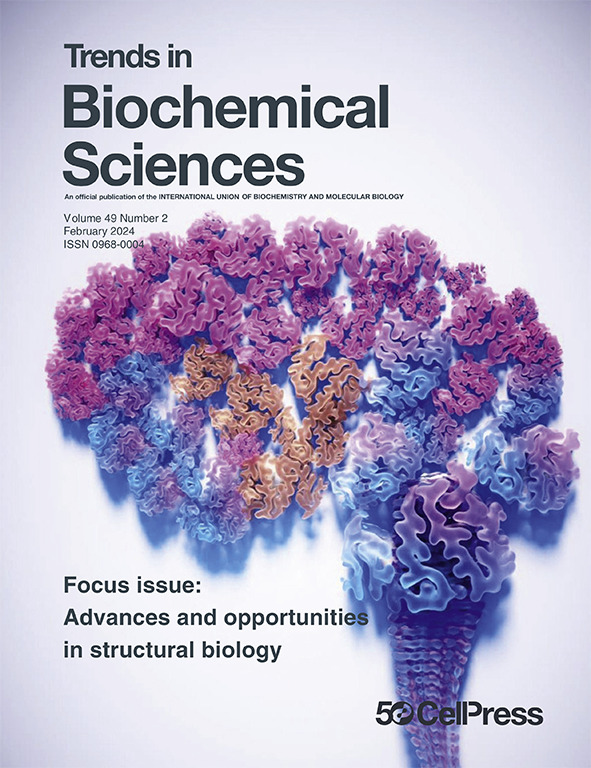AID/APOBEC:目标和职能的扩展曲目。
IF 11.6
1区 生物学
Q1 BIOCHEMISTRY & MOLECULAR BIOLOGY
引用次数: 0
摘要
属于AID/APOBEC家族的脱氨酶被称为ssDNA和mRNA突变体,参与先天/适应性免疫、mRNA编辑、通过限制反转录转座子来稳定基因组和致癌。最近的研究表明,AID/APOBEC靶点比以前认为的更加多样化,这意味着这些蛋白质具有更广泛的生物学影响。本文章由计算机程序翻译,如有差异,请以英文原文为准。
AID/APOBEC: an expanding repertoire of targets and functions.
Deaminases belonging to the AID/APOBEC family are known as ssDNA and mRNA mutators involved in innate/adaptive immunity, mRNA editing, genome stabilization by restricting retrotransposons, and carcinogenesis. Recent studies suggest that the repertoire of AID/APOBEC targets is more diverse than previously thought and imply a broader biological impact of these proteins.
求助全文
通过发布文献求助,成功后即可免费获取论文全文。
去求助
来源期刊

Trends in Biochemical Sciences
生物-生化与分子生物学
CiteScore
22.90
自引率
0.70%
发文量
148
审稿时长
6-12 weeks
期刊介绍:
For over 40 years, Trends in Biochemical Sciences (TIBS) has been a leading publication keeping readers informed about recent advances in all areas of biochemistry and molecular biology. Through monthly, peer-reviewed issues, TIBS covers a wide range of topics, from traditional subjects like protein structure and function to emerging areas in signaling and metabolism. Articles are curated by the Editor and authored by top researchers in their fields, with a focus on moving beyond simple literature summaries to providing novel insights and perspectives. Each issue primarily features concise and timely Reviews and Opinions, supplemented by shorter articles including Spotlights, Forums, and Technology of the Month, as well as impactful pieces like Science & Society and Scientific Life articles.
 求助内容:
求助内容: 应助结果提醒方式:
应助结果提醒方式:


